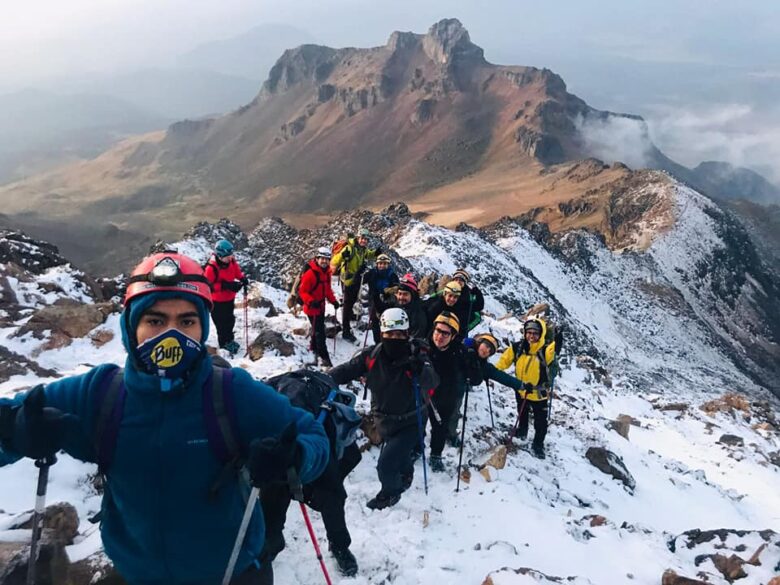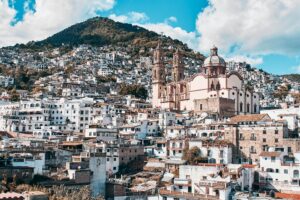Last weekend, I accomplished the most physically (and mentally) challenging feat of my life. At 5,286 meters (17,343 feet), Iztaccihuatl is the third highest mountain in Mexico and the seventh highest in North America. And, over the course of 15 grueling but eye-opening hours, I hiked the “sleeping woman” – and lived to tell about it!
For the months leading up to this journey – my first high-altitude hike ever – I was nervous as hell.
As a kid, I was never involved in sports, not because I wasn’t interested, but because I always felt I wasn’t athletic enough. Or strong enough. Was scared of failure. Even well into adulthood, I wasn’t able to shake this mindset, and often found myself making excuses to get out of anything that I deemed too physically demanding.
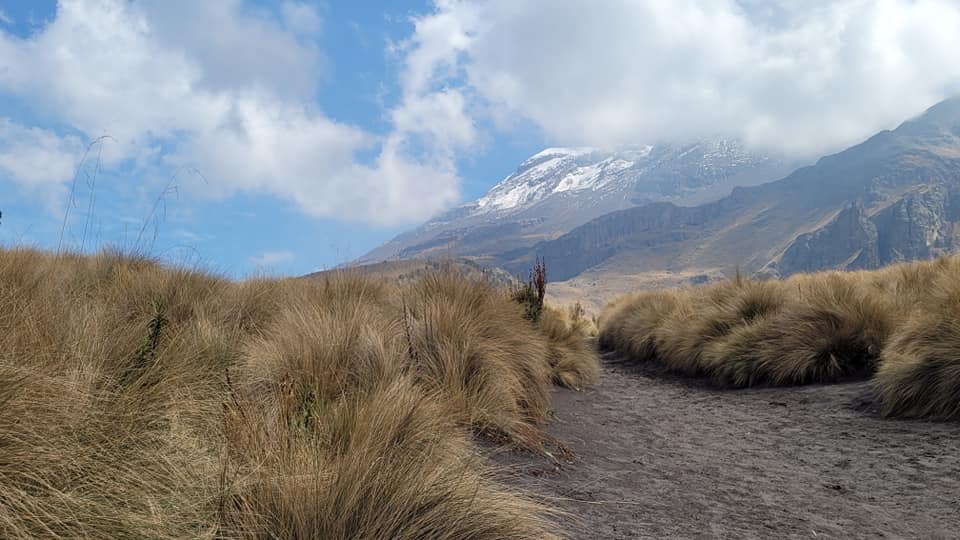
So when I signed on to this journey, I found myself, for the first time in my life, training to be a stronger, faster, fitter version of myself. I started running (which I HATE with a passion), learning breathing exercises and going on weekly mountain treks.
Then, suddenly, it was time to do the damn thing.
An early start
Traveling with three guides from Travesia, and a dozen of others seeking to push their limits, we made our way to Izta-Popo Zoquiapan National Park for a day of setting up camp and a solid acclimatization trek.

After a brief 30-min nap (excitement and anxiety prevented me from actually sleeping), the hike began at midnight.
Slow and steady, we made our way up the La Joya track, which was illuminated only by our headlamps and the light of a barely-there crescent moon. Although challenging, the start of the hike was exciting. Other-worldly even, as the silhouette of the surrounding Mars-like mountains surrounding Iztaccihuatl came slightly into view.
A couple hours in, we reached more precarious terrain, and it didn’t take long for the fear to set in. It wasn’t entirely visible, but I could just make out the sharp, steep drop just a few feet from the path on which we walked.
As the trail became more vertical, and more congested with other hikers, it also became more technical. Juggling my trekking poles while keeping my balance and mindful of the weight on my back, I scaled slippery rocks, now covered in snow and ice from the night’s storm.
Our guide decided it was time to don our crampons – plates with spikes to fix to our shoes – so that we could more safely traverse the mountain.
Shaken up by the sheer danger of what I was doing – and the thought of falling off the edge – I took a moment to quiet my doubts as I tightened my crampons. At this point, the sun was just starting to come out and the sky was painted hues of orange and red. And then, I saw it in all its glory: Popocatépetl, Mexico’s most famous (and tallest) volcano spewing ash into the morning sky.
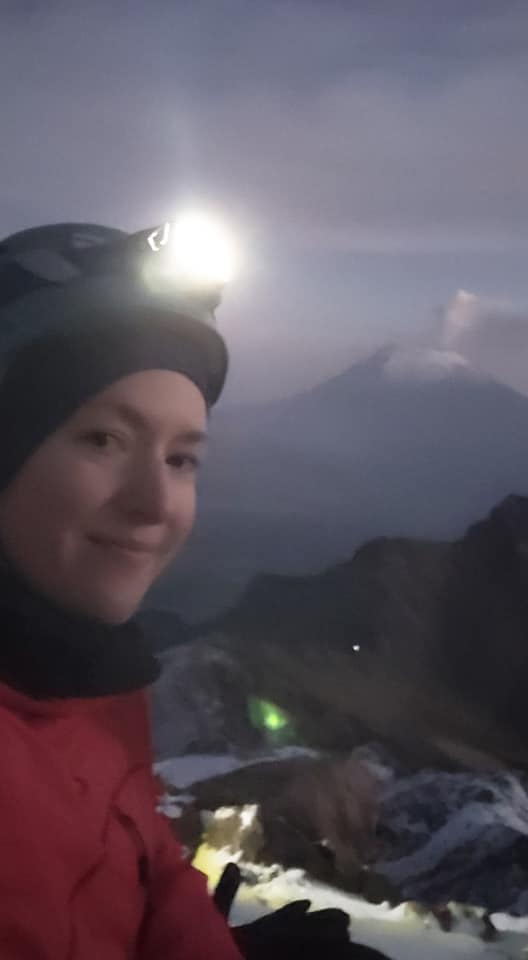
The vista of Popocatépetl releasing smoke and ash into the air revived me. Although still nervous, the majesty of this sight pushed me to go on, up and over “las rodillas” (the “knees” of the sleeping lady) and what would be the most taxing part of the journey.
Beyond the knees, and the steepest incline, we came upon Refugio Luis Méndez, where only the iron ruins of what was once a refuge remain. By now, the sun had risen completely and the encompassing landscape was crisp, clear and in full view.
Taking in smoking Popo, a glistening glacier and Pico de Orizaba (Mexico’s second highest mountain) in the distance, I sensed a feeling of camaraderie – and mutual achievement – with a group who had just moments before been strangers. It’s funny how nature has a way of doing that.
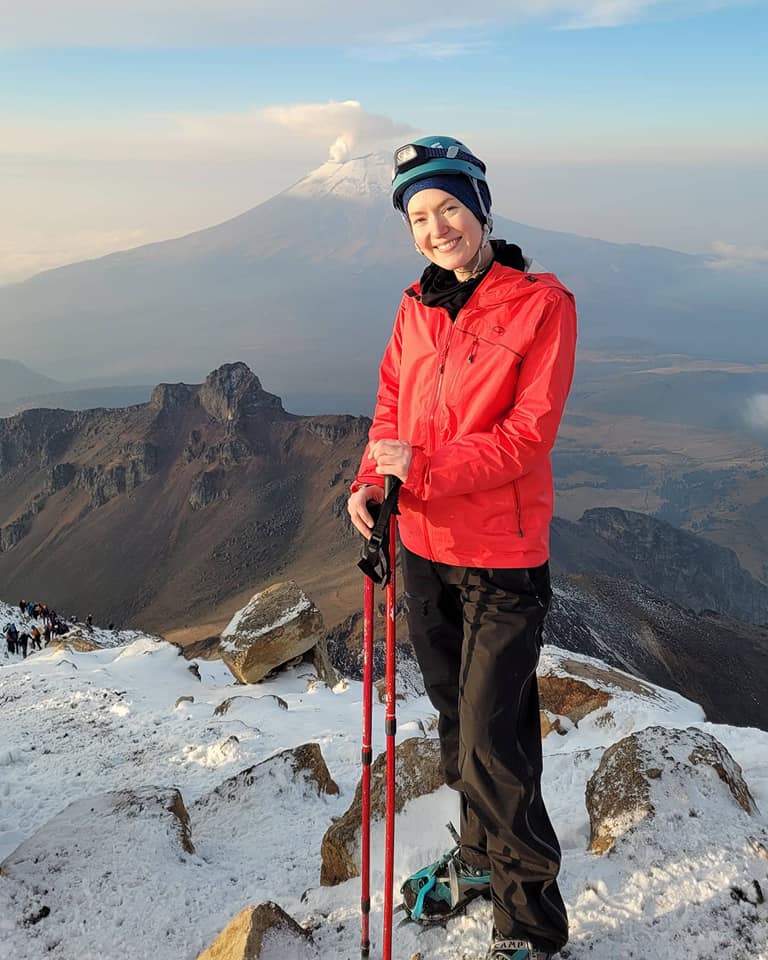
As we celebrated our first big achievement, we also prepared for the hours before us. Our trek was far from over.
After a short descent, our route continued to climb toward the peak of Iztaccihuatl, and we passed through more tricky parts requiring plenty of rock hugging and subsequently a steady release of expletives. Nevertheless, I was feeling far more secure, having gotten used to the crampons, and knowing my guides were there to assist and cheer me on.
Iztaccihuatl: The final leg
After another descend, we were ready to cross the lady’s belly: the Ayoloco glacier (which was declared dead due to climate change in 2018). I can’t even describe how magnificent this moment was – trekking across the powdery snow and surrounded by one of the most impressive landscapes I’ve ever seen.
We were now nine hours into the hike. At this point, we were given the option to continue to the peak or begin the six hour return back to base camp. I was feeling fine and capable of making it. But having slept just one hour in the past 48 hours, and running solely on adrenaline and copious amounts of Gachi matcha, I decided it was likely the smartest move to conserve the energy I had left so I opted out of the final leg of Iztaccihuatl. What was an extra hundred meters, anyway?
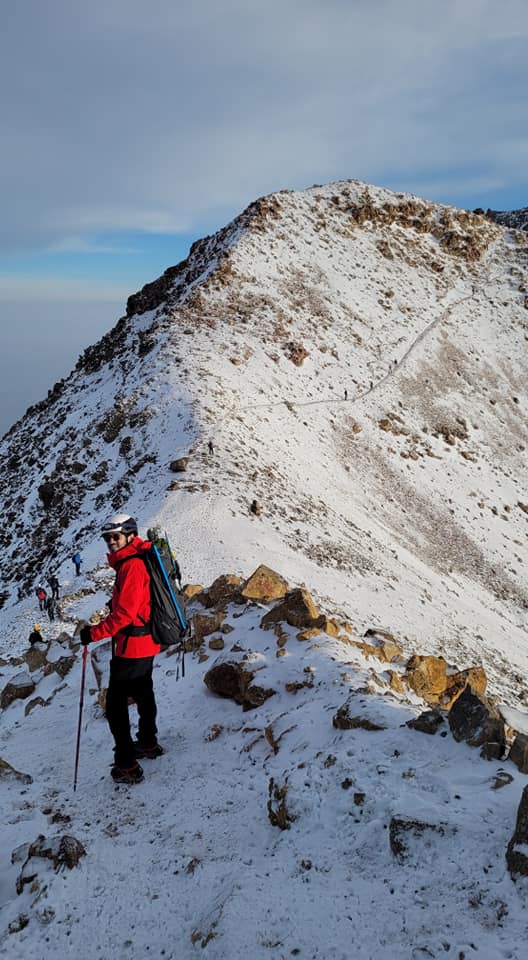
Although I went back and forth on that decision, I’m so glad I landed on going back early. The descent was slow and far more relaxing. And, honestly, a lot less scary, as the snow had melted, the path was visible and my confidence had improved. We made it back to camp just as my internal battery dropped to what felt like 1%.
And honestly, I’m still not back to 100%, 24 hours later.
Was it worth it? Hell yes. Every step, every heavy breath, every freezing finger. I feel like I’ve not only learned so much from this experience, but it’s without a doubt one of the most incredible accomplishments I’ve ever made.
On to the next Mexican mountain!

